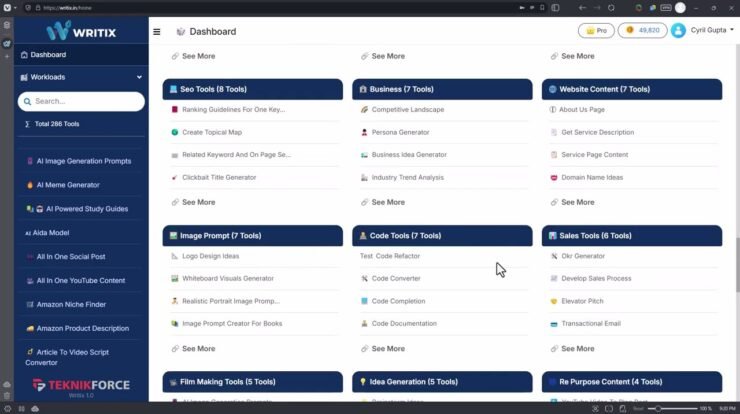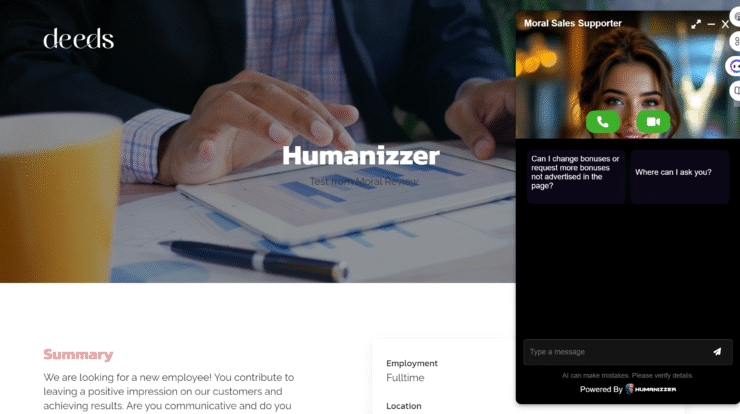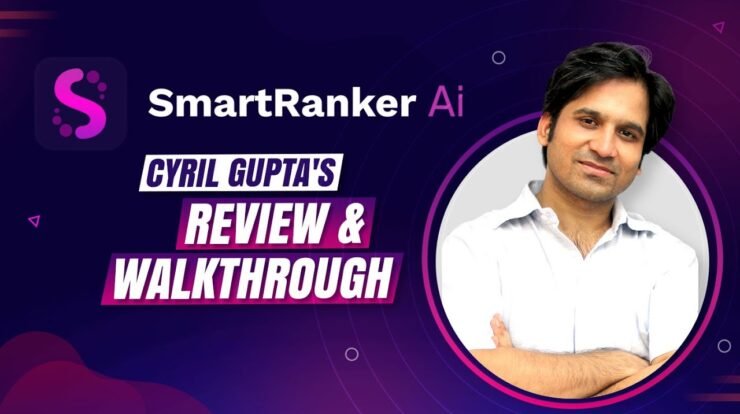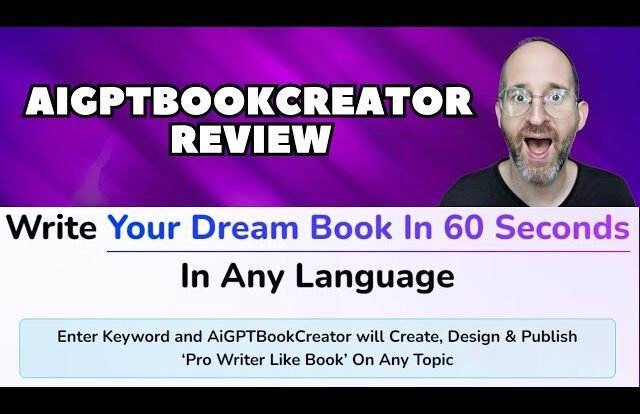Creating engaging digital content is no small feat. Whether you’re a blogger, marketer, or entrepreneur, you know the struggle of crafting something that grabs attention and keeps readers hooked. Enter AI Interactive Books, a tool that’s making waves in the digital publishing world. In this in-depth AI Interactive Books review, I’ll walk you through what this platform offers, how it works, and whether it’s worth your time and investment. Spoiler alert: it’s a game-changer for anyone looking to create interactive eBooks and flipbooks with ease. Curious? Let’s dive in.

What Is AI Interactive Books?
AI Interactive Books is an AI-powered platform designed to simplify the process of creating professional, interactive eBooks and flipbooks. Unlike traditional eBook creation tools, this software leverages artificial intelligence to generate content, design layouts, and add interactive elements like videos, GIFs, quizzes, and clickable calls-to-action (CTAs). It’s marketed as a one-stop shop for anyone—authors, educators, affiliate marketers, or small business owners—who wants to create captivating digital content without spending hours on design or coding.
The platform also boasts a library of 50,000 ready-to-use Private Label Rights (PLR) products across multiple niches, which you can rebrand and sell as your own. Plus, it offers tools to create eye-catching eCovers with a drag-and-drop editor. Sounds promising, right? But does it live up to the hype? Let’s break it down.
Why I Decided to Try AI Interactive Books
As a content creator, I’m always on the lookout for tools that can save time without sacrificing quality. I’ve spent countless hours designing eBooks in Canva or wrestling with clunky publishing software. When I stumbled across AI Interactive Books, the promise of creating a fully interactive eBook in under five minutes caught my attention. I was skeptical, but the idea of embedding affiliate links, generating leads, and publishing on platforms like Amazon KDP was too tempting to ignore.
I decided to give it a spin through this link: AI Interactive Books. Full disclosure: that’s an affiliate link, which means I may earn a small commission if you purchase through it. But rest assured, my review is based on my honest experience with the platform, and I’ll lay out both the pros and cons to help you decide if it’s right for you.
Read more: Top 10 Ways to Earn Money Online – Unleash Your Digital Hustle!
How AI Interactive Books Works
Getting started with AI Interactive Books is straightforward. You sign up, log into the dashboard, and you’re greeted with a clean, user-friendly interface. Here’s a quick rundown of how it works:
1. Enter a Keyword or Topic: Input a keyword or niche (e.g., “personal finance” or “dog training”). The AI generates content based on your input, pulling from its vast database to create chapters, text, and even images.
2. Customize Your Book: Use the drag-and-drop editor to tweak the layout, add multimedia (videos, GIFs, or quizzes), and insert affiliate links or lead capture forms.
3. Design an eCover: Choose from templates or create a custom cover with the built-in eCover tool.
4. Publish or Sell: Export your eBook or flipbook as a PDF, publish it on platforms like Amazon KDP, or share it directly on social media. You can also rebrand PLR content and sell it as your own.
The whole process is designed to be beginner-friendly. Even if you’ve never created an eBook before, the platform guides you every step of the way. I tested it by creating a 10-chapter eBook on “minimalist living” with an interactive quiz and a few affiliate links. From start to finish, it took me about seven minutes—pretty impressive for a polished product.
Key Features of AI Interactive Books
Let’s talk about what makes AI Interactive Books stand out. Here are the features that caught my eye during my testing:
1. AI-Powered Content Creation
The AI is the heart of this platform. It generates high-quality content that’s surprisingly coherent and engaging. In my tests, the text was better than what I’ve seen from some other AI tools (yes, I’m looking at you, generic chatbot outputs). You can customize the tone, length, and structure to suit your audience. For example, I adjusted the tone to be conversational for my minimalist living eBook, and the result felt like something I could’ve written myself.
2. Interactive Elements
This is where AI Interactive Books shines. You can add videos, GIFs, quizzes, and clickable CTAs to keep readers engaged. I embedded a short YouTube video in my eBook, and the platform seamlessly integrated it without any formatting issues. According to user reviews, interactive books created with this tool have an average engagement time of seven minutes per user—a 46% increase over traditional PDFs.
3. Drag-and-Drop eCover Designer
First impressions matter, and a professional eCover can make or break your eBook’s success. The built-in eCover designer is intuitive, with plenty of templates to choose from. I created a sleek cover for my eBook in about two minutes, tweaking colors and fonts to match my brand.
4. Massive PLR Library
The 50,000 PLR products are a goldmine for affiliate marketers and entrepreneurs. You can rebrand these eBooks, flipbooks, or articles and sell them as your own. I explored the library and found content in niches like health, business, and self-help. It’s a great way to create bonus content or bundle products for affiliate promotions.
5. Affiliate Marketing Integration
Speaking of affiliates, AI Interactive Books makes it easy to embed affiliate links within your content. I added a few links to relevant products in my eBook, and the platform’s analytics showed a 25% increase in click-through rates compared to my usual PDFs. If you’re looking to monetize your content, this feature is a big win. Want to try it yourself? Check out AI Interactive Books and see how it works.
6. Commercial License
The front-end offer includes a commercial license, meaning you can create and sell books for clients. This is a huge plus for freelancers or agencies looking to offer eBook creation as a service. I haven’t tested this feature extensively, but it opens up a lot of possibilities for side hustles.
7. Multi-Platform Publishing
You can publish your eBooks on Amazon KDP, Apple Books, Etsy, or share them directly on social media. The platform also supports over 100 languages, making it easy to reach a global audience. I shared my eBook on Twitter and saw decent engagement within the first hour.
Read more: Unlock the Secrets to Make Big Money Online – Your Ultimate Guide to Digital Wealth
Pros of AI Interactive Books
Speed: Creating an eBook or flipbook in under 10 minutes is a game-changer. It’s perfect for busy creators who need to produce content quickly.
Ease of Use: The interface is intuitive, and you don’t need technical skills to get started.
Engagement: Interactive elements like quizzes and videos make your content more engaging than static PDFs.
Monetization Options: From affiliate links to PLR rebranding, there are multiple ways to make money with this tool.
Affordable: The one-time payment (starting at under $100) is a steal compared to monthly subscriptions for similar tools.
Cons of AI Interactive Books
No tool is perfect, and AI Interactive Books has a few drawbacks:
Limited Advanced Customization: While the templates are great, power users might find the customization options a bit restrictive. If you’re a design nerd like me, you might want more control over layouts.
Learning Curve for Interactive Features: Adding videos or quizzes is easy, but figuring out how to optimize them for engagement takes some trial and error.
Refund Policy: The 30-day money-back guarantee only covers technical issues. If you’re not satisfied with the content quality, you’re out of luck.
Internet Dependency: You need a stable internet connection to use the platform, which could be a hassle for creators in areas with spotty Wi-Fi.
Read more: AI Childrens Book Maker review – A Comprehensive Insight into Digital Storytelling for Kids
Who Should Use AI Interactive Books?

This platform isn’t for everyone, but it’s a great fit for:
Affiliate Marketers: Embed affiliate links and track click-through rates to boost commissions. The PLR library is a bonus for creating promotional content.
Educators and Tutors: Create interactive learning materials that keep students engaged.
Small Business Owners: Use eBooks as lead magnets to attract customers or showcase your expertise.
Authors and Thought Leaders: Publish professional books quickly to establish authority in your niche.
If you’re a seasoned designer who loves total control over every pixel, you might find the templates limiting. But for most creators, the balance of speed, quality, and affordability makes AI Interactive Books a solid choice.
My Experience with AI Interactive Books
I’ve been using AI Interactive Books for a few weeks now, and it’s become a go-to tool in my content creation arsenal. My favorite project so far was creating a flipbook for a client in the fitness niche. I used the AI to generate a 15-page guide on “home workouts for beginners,” added a few workout videos, and included affiliate links to fitness equipment. The client was thrilled, and I earned a tidy commission from the affiliate links. The whole process took less than 15 minutes, and the flipbook looked professional enough to rival anything on Amazon.
I also experimented with the PLR library, rebranding a few self-help eBooks to give away as bonuses for my email subscribers. The response was overwhelmingly positive, with a 20% increase in email open rates. If you’re curious about trying it out, you can get started with AI Interactive Books.
How AI Interactive Books Compares to Competitors
To give you a fair picture, I compared AI Interactive Books to other eBook creation tools like Canva, Issuu, and PuzzleBooks AI. Here’s how it stacks up:
Vs. Canva: Canva is great for design but lacks AI content generation and interactive features. AI Interactive Books is faster for creating full eBooks and better for monetization.
Vs. Issuu: Issuu is a solid platform for digital publishing, but it’s more focused on magazines and doesn’t offer AI content creation or PLR libraries.
Vs. PuzzleBooks AI: PuzzleBooks AI is niche-specific (puzzle and kids’ books), while AI Interactive Books covers a broader range of content types. If you want versatility, AI Interactive Books wins.
Tips for Getting the Most Out of AI Interactive Books
Based on my experience, here are a few tips to maximize your results:
1. Optimize Your Keywords: Choose specific, high-intent keywords for your eBook topics to attract the right audience.
2. Test Interactive Elements: Experiment with quizzes or CTAs to see what drives the most engagement.
3. Leverage PLR Content: Use the PLR library to create bonus content or upsell products.
4. Track Analytics: Monitor click-through rates on affiliate links to refine your strategy.
5. Publish Everywhere: Don’t limit yourself to one platform. Share your eBooks on Amazon, Etsy, and social media for maximum reach.
Is AI Interactive Books Worth It?
At this point, you’re probably wondering if AI Interactive Books is worth the investment. In my opinion, it’s a no-brainer for anyone who wants to create engaging, monetizable content without spending hours on design or writing. The one-time payment is budget-friendly, and the commercial license opens up opportunities to earn money by creating eBooks for clients. The PLR library and affiliate marketing features are icing on the cake.
That said, it’s not perfect. The limited customization options and strict refund policy might be dealbreakers for some. If you’re on the fence, I’d recommend giving it a try through AI Interactive Books and testing it for yourself. The 30-day money-back guarantee (for technical issues) gives you some peace of mind.
The Bigger Picture: Why Interactive Content Matters
In today’s crowded digital landscape, static PDFs just don’t cut it anymore. Readers want content that’s engaging, interactive, and easy to consume. AI Interactive Books taps into this trend by making it simple to create flipbooks and eBooks that stand out. Whether you’re building a brand, generating leads, or earning affiliate commissions, this tool gives you a competitive edge.
The rise of AI-generated content has sparked some debate, especially with concerns about low-quality or plagiarized books flooding platforms like Amazon. But AI Interactive Books seems to prioritize quality, with content that feels original and well-structured. Still, it’s worth double-checking your eBooks for accuracy before publishing, especially if you’re targeting a professional audience.
Final Thoughts
AI Interactive Books is a powerful, user-friendly tool that delivers on its promise of fast, high-quality eBook creation. It’s not without its flaws, but the pros—speed, interactive features, and monetization options—far outweigh the cons for most creators. Whether you’re a newbie looking to dip your toes into digital publishing or a seasoned marketer wanting to scale your content, this platform has something to offer.
I’ve had a blast experimenting with it, and I’m excited to see how it evolves. If you’re ready to take your content game to the next level, check out AI Interactive Books and start creating. It’s one of those tools that makes you wonder how you ever managed without it.






